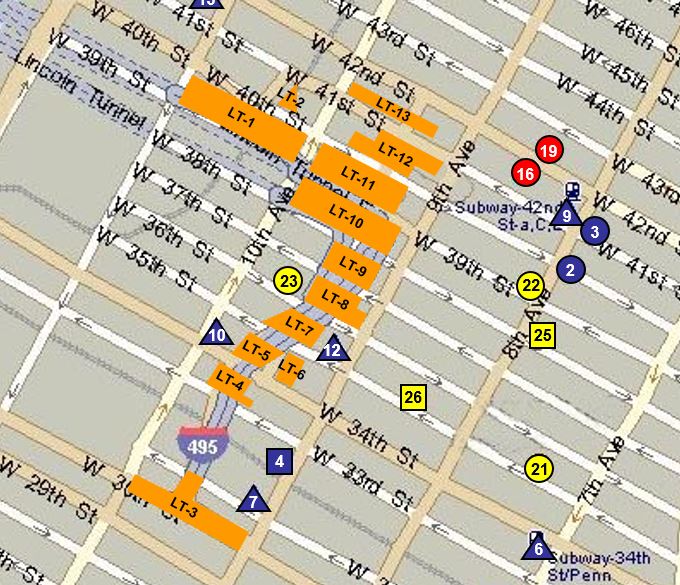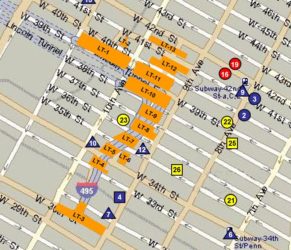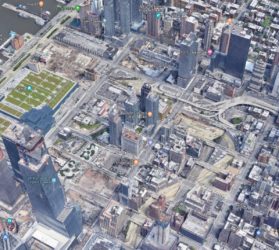The Lincoln Tunnel connects New Jersey with New York City, and carries over 110,000 vehicles each day. The Tunnel includes three tubes, which had phased openings between 1937 and 1957. The roadways providing access to and from the Tunnel in Manhattan are located on 13 parcels between 9th and 11th Avenues, and between West 30th and West 42nd Streets in the fast-growing Hudson Yards neighborhood.
Given the tremendous amount of development planned for the neighborhood, the Port Authority of New York and New Jersey (“PANYNJ”) wanted to create a portfolio strategy for realizing the value, if any, of their 13 parcels of land. On some parcels, roadways only covered small portion of the lot, and on others roadways were below grade, where platforms could be constructed to allow real estate development above. While the configuration and size of a few sites prevented development entirely these parcels’ air rights might still have potential value to receptor sites.
To create a portfolio development strategy for the 13 parcels RESGroup worked with a team that included architects and engineers. RESGroup first completed a high-level market analysis that considered office, residential, retail, and hotel uses, to understand potential absorption and pricing given the many new projects already proposed for the neighborhood. As the Hudson Yards area was largely underdeveloped at the time, the adjacent Times Square and Penn Station submarkets were analyzed for office, residential, and hotel uses. The market analysis also included commercial and residential land sales and development rights transfers.
RESGroup then considered the location, constructability, zoning, FAR, and availability of receiving sites to estimate values of each of the parcels. Based on the market and financial analyses, RESGroup and the team completed a development strategy to prioritize value opportunities within the 13 parcels portfolio, identifying hundreds of millions of dollars in potential value.


